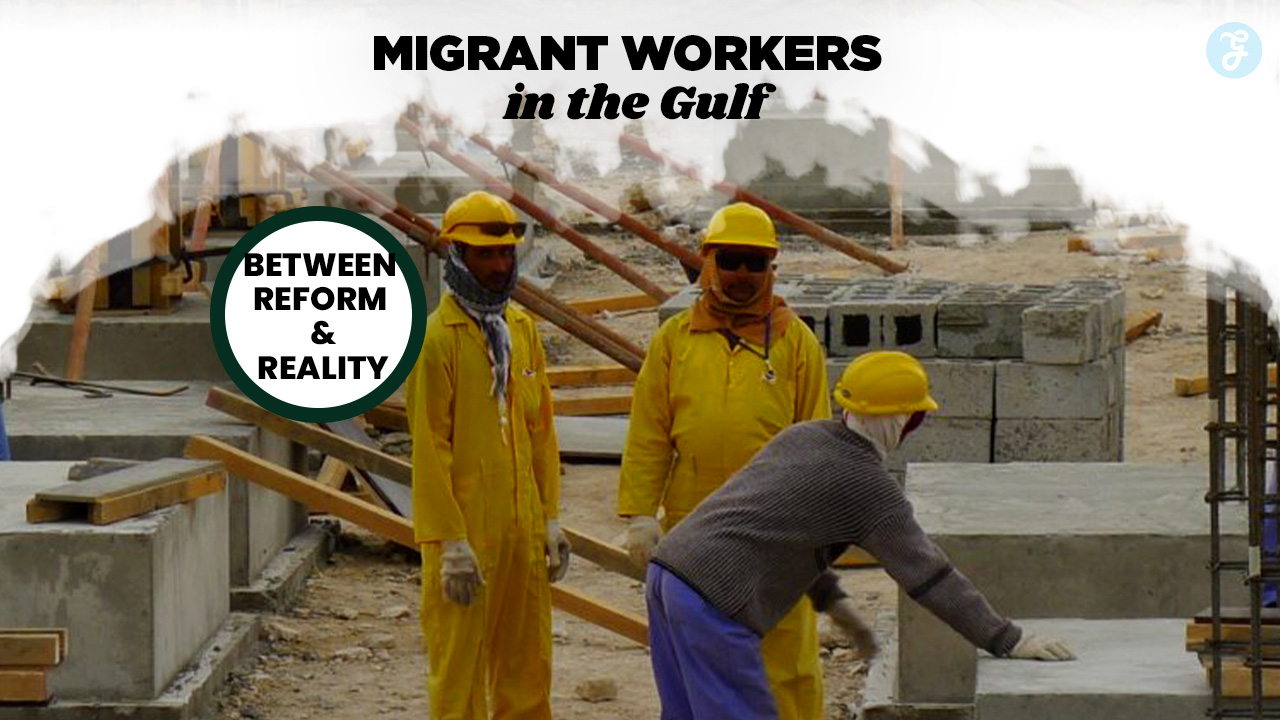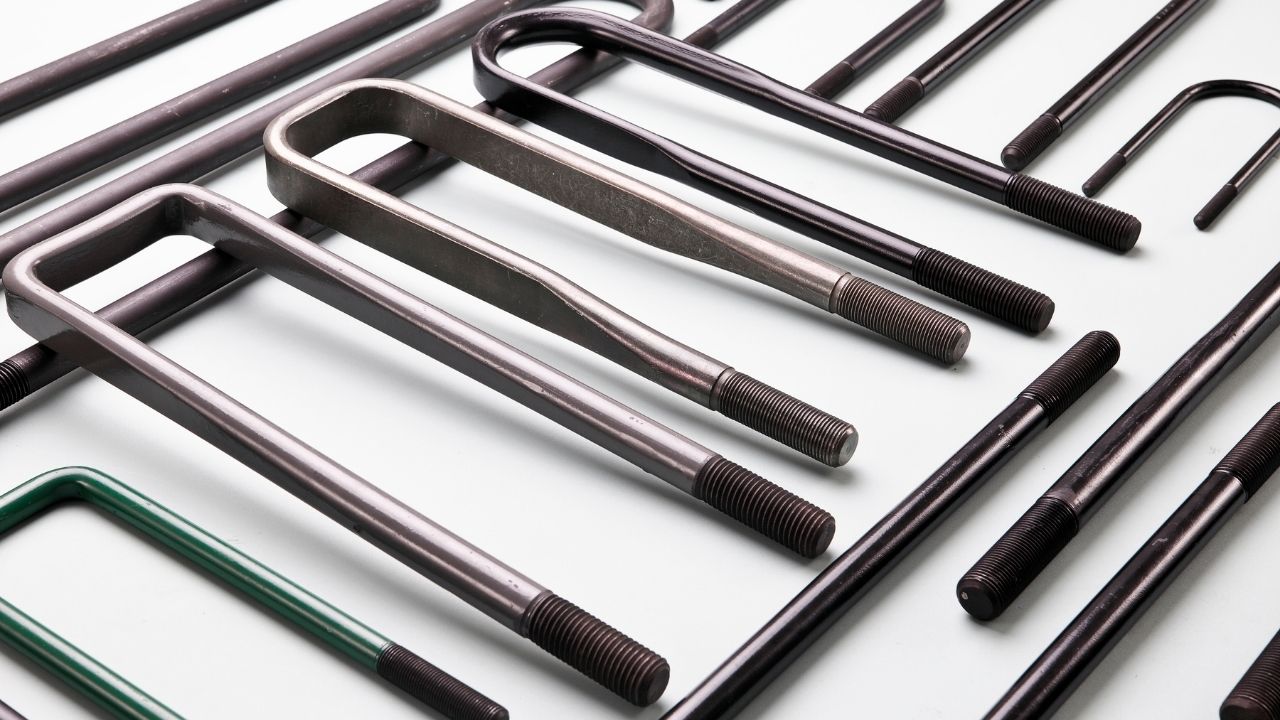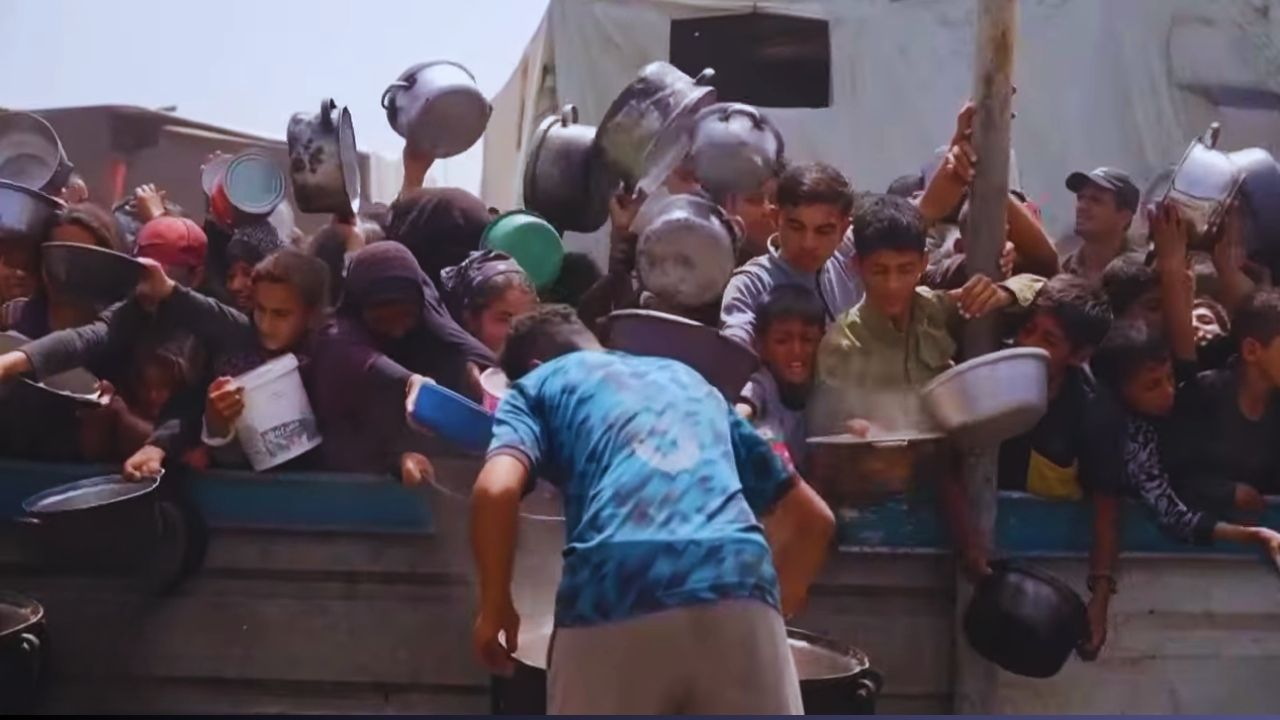Millions of migrant workers in the Gulf face tough conditions every day. Many struggle with low pay, long hours, and little protection under the kafala system.
The Gulf states rely heavily on foreign labor, but reforms have been slow to make real change. Human Rights Watch recently highlighted how climate risks add even more pressure on these workers.
This blog breaks down the challenges and progress for migrant workers in the Gulf. You’ll see where policies fall short—and what still needs fixing. Keep reading to learn more.
Key Takeaways
- Millions of migrant workers in the Gulf face tough conditions under the kafala system. Many deal with low pay, long hours, and little freedom to change jobs. Reforms are slow, and gaps remain between laws and reality.
- The Gulf relies heavily on foreign labor but pushes for local hires through nationalization plans like Saudi Arabia’s Vision 2030. Workers from India, Pakistan, and Nepal dominate sectors like construction (Qatar’s World Cup), domestic work, and healthcare. Extreme heat risks (above 90°F/32°C) worsen their struggles.
- Recent reforms include Qatar ending employer exit permits (2020) and Saudi Arabia allowing free movement (2021). Yet wage theft and abuse cases reported by Human Rights Watch persist—like unpaid wages for Dubai technicians after 18 months of work despite new rules aiming at fairer treatment when enforced properly, which is not always happening fast enough.
History of Migrant Workers in the Gulf
The first wave brought laborers from South Asia after oil was discovered decades ago—they built cities from sand dunes under scorching suns. Later waves saw more skilled professionals arrive, filling hospitals, hotels, and offices.
Today, millions still come chasing dreams but face old rules and new struggles. Their stories weave through steel towers, desert highways, cramped dorm rooms, and silent kitchens.
First Wave of Migration
The first wave of migration to the Gulf began in the 1930s, driven by the discovery of oil. Workers from India, Pakistan, and other Asian countries arrived to fill labor shortages in the oil industry.
Many came under short-term contracts, with few rights or protections.
By the 1950s, demand for labor grew as Gulf countries expanded infrastructure. Workers from Egypt, Yemen, and Palestine also joined, often in construction and service jobs. The kafala system took root, tying workers to their employers.
Wages were low, and conditions harsh, but remittances sent home kept migration steady.
Second Wave of Migration
The second wave of migration hit the Gulf in the 1970s. Oil prices shot up, and Gulf states needed more hands to build their booming economies. Workers from South Asia and Arab states flooded in, filling jobs in construction, healthcare, and domestic work.
Countries like Saudi Arabia and the United Arab Emirates leaned heavily on foreign labor. The kafala system tightened its grip during this period, tying workers to sponsors with little freedom to switch jobs or leave without permission.
Wages were low, conditions harsh, but remittances sent home kept families afloat in India, Pakistan, and beyond.
Third Wave of Migration
The third wave of migration in the Gulf has brought a surge of foreign workers, mostly low-skilled laborers. Only 16% are highly skilled, with many filling jobs in construction, domestic work, and hospitality.
The gulf cooperation council (gcc) countries rely heavily on this workforce to fuel economic growth.
Reforms aim to improve labor rights, but the kafala system still limits worker mobility and pay. Climate change adds risks like extreme heat, making jobs tougher for migrants.
Demographics of Migrant Workers
Migrant workers flood the Gulf, with Indians, Pakistanis, and Filipinos topping the list. Men dominate the construction sector, while women fill roles in domestic work—each country’s workforce tells a different story.
Bahrain
Bahrain’s approach to migrant workers mixes reform efforts with persistent challenges under the kafala system.
| Aspect | Details |
|---|---|
| Regulatory Body | Labor Market Regulation Authority oversees migration policies. |
| Kafala System | Still in place, leaving workers vulnerable to exploitation. |
| Recent Reforms | Wage protection, social security, and mandatory health insurance introduced. |
| Visa Changes | No-objection certificates scrapped. Temporary visas now available for job seekers. |
| Residency Rules | Long-term residency and naturalization revised to attract wealthy expats. |
| Reform Goals | Aligns with international labour law while prioritizing high-skilled workers. |
| Regional Competition | Offers high salaries and opportunities to lure skilled professionals. |
| Implementation Issues | Systemic hurdles slow down enforcement of worker protections. |
Kuwait
Kuwait’s labor market tells a story of tight control, slow reforms, and shifting demographics.
| Category | Details |
|---|---|
| GCC Membership | Part of the gulf cooperation council (gcc), where migrant workers dominate labor markets. |
| Sponsorship System | Workers are tied to employers, creating power imbalances. Low-wage employees face the worst conditions. |
| Nationalization Push | Government jobs are Kuwaiti-only. Private sector gets incentives to hire locals, penalties if they don’t. |
| Shifting Workforce | Fewer migrant workers from 2015-2021, but numbers recently bounced back. More Kuwaitis joined private jobs after 2020. |
| Reform Efforts | Trying to balance international labour law with attracting skilled foreigners. The kafala system still shapes worker conditions. |
Oman
Oman’s foreign labour has seen dramatic shifts in recent years.
| Category | Details |
|---|---|
| Population Change | Foreign population dropped 80% between mid-2017 and mid-2020. |
| Key Sectors | Construction, domestic work sector, and healthcare rely heavily on migrants. |
| Legal Framework | Oman enforces labour law but gaps remain in worker protections. |
| Economic Role | Migrants contribute to Oman’s economy but face wage delays. |
| Reforms | Efforts to improve conditions include stricter contract oversight. |
Workers often struggle with long hours and limited rights.
Qatar
Qatar relies heavily on migrant workers, especially in key sectors like construction and hospitality. The World Cup in 2022 put a spotlight on labor conditions, pushing the country to introduce reforms. New rules now ban outdoor work when temperatures hit dangerous levels above 90°F (32.1°C).
The kafala system ties workers to employers, making job changes tough without permission. Recent laws aim to loosen these restrictions, but gaps remain. Critics say progress is slow despite global pressure for better protection of labor rights.
Saudi Arabia
Saudi Arabia hosts millions of migrant workers, mostly in construction and domestic work. In 2017, the country raised fees for foreign employees and their families sharply. This pushed some businesses to hire locals instead.
The Vision 2030 plan aims to shift Saudi jobs from oil to tech and services. It promotes Saudization, requiring companies to hire more citizens. Many low-wage migrants still face tough conditions under the kafala system, though reforms are slowly happening.
United Arab Emirates (UAE)
The United Arab Emirates hosts millions of migrant workers, many from South Asia and Africa. Most work in construction, domestic jobs, or hospitality. The country introduced golden visas in 2018, giving some workers longer stays.
Hosting the 2020 Expo put labor rights in the global spotlight. Many workers face tough conditions despite reforms. The kafala system ties them to employers, limiting freedoms. Remittances sent home boost economies in their native countries.
Key Sectors Employing Migrant Workers
From skyscrapers in Dubai to hospital wards in Riyadh, Gulf economies lean on migrant workers—find out where they work and why it matters.
Construction
Construction dominates migrant labor jobs across gulf cooperation council (gcc) states like Qatar, UAE, and Saudi Arabia. The sector relies heavily on low-wage foreign labour who build skyscrapers, future stadiums, and infrastructure projects.
During Qatar’s World Cup prep, migrant crews faced grueling conditions—repairing up 150 AC units per day under tight deadlines. Workers often endure long shifts without overtime pay due to gaps between labour law enforcement.
Many get trapped by recruitment fees tied to the visa sponsorship system called kafala. Safety risks persist despite reforms promising better housing and worksite protections. Economic growth fuels demand, but human costs stay high behind glossy cityscapes rising fast across Persian Gulf regions.
Domestic Work
Domestic work is a major sector for migrant workers in the Gulf. Many come from countries like India, the Philippines, and Nepal to work as maids, cooks, or nannies. The domestic work sector relies heavily on the kafala system, tying workers to their employers.
This often leads to long hours, low pay, and limited freedom.
Workers face tough conditions with little legal protection. Some endure unpaid wages or abuse with few ways to complain. In Gulf countries such as Qatar and Saudi Arabia, gaps remain despite recent reforms.
Domestic workers still struggle for fair treatment under labour law that excludes them from basic rights enjoyed by others. Their stories highlight the harsh reality behind closed doors.
Hospitality and Tourism
Hotels and resorts in the Gulf lean heavily on migrant workers. These workers run front desks, clean rooms, and serve meals every day. Labour law pushes companies to hire locals, but many still depend on foreign labour.
Pay problems and tough conditions often plague these jobs. Some workers wait months for wages while others face unsafe environments. New rules aim to fix this by tightening protections under labor law reforms.
The kafala system makes things worse by trapping low-wage employees with strict visa ties to employers, limiting freedoms. Remittances sent home boost economies in their native countries. The Gulf region relies on their labor while struggling with fair treatment.
Healthcare
Migrant workers play a big role in the Gulf’s healthcare sector. Many come from countries like India, the Philippines, and Nigeria. Saudi Arabia’s Special Talent visa, launched in 2023, aims to attract skilled healthcare professionals.
Hospitals and clinics rely on migrant nurses and doctors due to local shortages. Long hours and high stress are common challenges these workers face. Limited labor rights under the kafala system add to their struggles.
Despite reforms, gaps in fair wages and working conditions remain a reality for many.
Transportation
Trucking and taxi services in the Gulf rely heavily on migrant workers. Many drive long hours with little rest or fair pay. Some face unsafe conditions, such as old vehicles or harsh weather.
Public transport jobs also see high foreign labour use. Bus drivers and metro staff often come from Asia or Africa. The kafala system ties them to employers, making job changes tough without permission.
Delays in wages occur too often. Better laws could help these workers stay safe and receive timely pay.
The Kafala System and Its Impact
The kafala system ties migrant workers to their bosses, trapping many in unfair jobs with little freedom.
Want to know how this really affects people? Keep reading.
Restrictions on Worker Mobility
The kafala system locks migrant workers to their employers, like a leash. They can’t switch jobs without permission, making them easy to trap in bad conditions. Workers often stay silent about abuse because losing their job means losing their visa too.
Qatar tried fixing this with new laws in 2015 and 2020. Many workers struggle to leave abusive bosses even after these changes. Employers hold all the power under the kafala system, leaving migrants stuck between a rock and a hard place.
Protection Gaps for Domestic Workers
Domestic workers in the Gulf face big risks under the kafala system. Their visas link directly to employers, leaving them open to abuse. Many suffer wage theft or pay high recruitment fees just to get hired.
Labour law reforms often ignore them, favoring skilled workers instead. Nationalization policies push locals into better jobs, while low-skilled migrants stay vulnerable. Without strong protections, migrant domestic workers struggle to demand fair treatment.
Oil-dependent economies slow down real change. Even when laws improve, enforcement remains weak. Domestic workers rarely see access to justice for unpaid wages or poor conditions. The gap between policy and reality stays wide.
Some reforms look good on paper but don’t help those who need it most. Without freedom to leave bad jobs, many feel trapped in cycles of debt and exploitation. The system keeps power in employers’ hands.
Wage Payment Issues
Migrant workers in the Gulf often face wage payment problems. Some go months without pay, like a technician in Dubai who left after 18 months of unpaid work. Human Rights Watch found many cases of wage violations across the region.
The kafala system makes it hard for workers to demand fair pay. Employers sometimes delay or withhold wages with little consequence. Workers in the construction sector and domestic work sector are hit hardest.
Many rely on these earnings to support families back home, making unpaid wages a crushing blow.
Human Rights Concerns
Migrant workers in the Gulf often face harsh conditions, from unsafe job sites to unpaid wages. Many struggle with poor mental health, trapped by unfair systems that ignore their basic rights.
Deportations and Legal Remedies
Deportations hit hard in Saudi Arabia. In 2022, over 100,000 Ethiopians were sent home. Many faced harsh conditions during the process. Hundreds of thousands have been deported since 2013.
Workers often struggle to find legal help. The kafala system makes it tough to fight unfair treatment. Some try local courts but face delays and costs. Few get justice before being forced to leave their jobs behind.
Working Conditions and Safety
Migrant workers in the Gulf region face tough work environments. Many toil under extreme heat, with temperatures often hitting 40°C (104°F) for over 100 days a year. These conditions lead to health risks like dehydration, nosebleeds, and fainting.
Construction sites lack proper shade or breaks, making things worse.
Safety measures are weak in key sectors such as the construction sector and domestic work sector. Workers rarely get protective gear or training. The kafala system ties them to employers, leaving little room to complain about unsafe workplaces.
Stories of accidents and long hours without rest are common among laborers in countries like Qatar and Saudi Arabia.
Mental Health and Wellbeing
Migrant laborers across gulf cooperation council (gcc) nations struggle under harsh conditions that harm their mental health. Daily reports show abuse such as unpaid wages and dangerous heat exposure that add stress and cause rules to fail them often.
Reform Efforts in the Gulf
Gulf nations are slowly changing labor laws to protect migrant workers better. Some countries, like Qatar and Saudi Arabia, have ended parts of the kafala system, but challenges remain.
New rules aim to stop wage theft and improve living conditions, yet many workers still face unfair treatment. The push for reform is strong, but real change takes time.
Labor Law Reforms
Gulf countries have made changes to labor laws to improve conditions for migrant workers. Bahrain and the United Arab Emirates dropped no-objection certificates, letting workers switch jobs more easily.
Saudi Arabia’s 2021 Labor Market Initiative also introduced reforms, giving migrants better rights and protections.
These updates aim to fix issues like wage delays and job restrictions under the kafala system. Some gulf cooperation council (gcc) nations are moving toward decent working conditions in sectors like the construction sector and domestic work sector.
Still, enforcement remains a challenge as employers resist change.
Initiatives to Abolish or Reform the Kafala System
Gulf countries are making changes to the kafala system. In 2020, Qatar reformed its labor laws, letting workers switch jobs without employer permission. Saudi Arabia also loosened rules, allowing free exit and re-entry for migrant workers.
Reforms face pushback from employers who rely on cheap labour. Pressure from international groups pushes for better protections. The FIFA World Cup in Qatar spotlighted poor labor conditions, speeding up changes.
Some gaps remain, but progress inches forward.
Enhanced Worker Protections
Gulf countries are making changes for migrant worker safety that are better than before. New laws help ensure fair pay, safe jobs, and good healthcare. Oman passed its Social Protection Law last year, providing benefits like health insurance.
Other places added wage checks so employers must pay on time.
Takeaways
Change crawls in the Gulf, but real progress? That’s a race many workers are still waiting to run. Laws look better on paper than in practice, leaving folks stuck between hope and hard labor.
The World Cup spotlight helped, yet everyday struggles—like heat stress and wage theft—aren’t fixed by headlines. Until reforms hit the ground running, migrant workers keep paying the price for promises unmade.
Their sweat built skylines; their rights deserve more than scraps of reform.









































